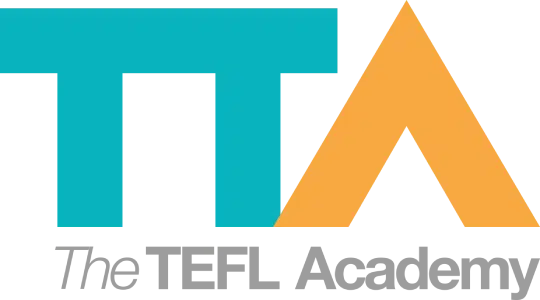How To Write A Teacher Profile That Attracts Students Online
Table of Contents
- Introduction
- Why your profile matters
- How to write a profile
- Testimonials and reviews
In a crowded marketplace of online tutors, your teaching profile isn’t just a summary—it’s your first impression, your pitch, and often the deciding factor for whether a student chooses you over someone else.
As online teacher Dariusz says: “Your profile is your storefront—students choose their tutors based on what they see, so it’s crucial to fill it out completely and professionally.”
A well-written tutor profile has the power to build trust, showcase your unique strengths, and most importantly, attract the right students for you.
Whether you’re just starting out or looking to refresh your existing profile, this guide will walk you through exactly how to craft a stand-out bio—from writing a compelling headline to showcasing your teaching style and qualifications.
Because this is such an important topic, we’ve brought in one of our TEFL Academy tutors to help us out. Luan is not only a super-star teacher trainer, but she’s an online teacher too. Talk about multi-tasking!
Luan, spill the tea!
I’m Luan, a passionate ESL teacher who’s been teaching online and in the classroom for several years, and honestly, I love my job. I get to help students gain confidence, watch their progress and connect with people from all over the world.
It’s a gift that keeps on giving every single day.
My income comes from various TEFL-related streams. But if I wanted to make online teaching my main source of income, I totally could – and you can too.
Over the years — as a teacher trainer, classroom teacher, and even a head teacher at one point — I’ve seen both sides of the recruitment process. I’ve been the one putting together my own teaching profile, and I’ve been the one reading through stacks of them when hiring.
I know what it feels like from both sides.

Why your teacher profile matters more than you think
Let’s be real: standing out as an ESL teacher these days is not always easy. Students don’t just stumble in by accident or get handed to you on a platter. You need to go and get them. Invite them to a place of learning, laughing, and growing.
It’s crucial to have a profile that grabs attention – not just any attention but the right kind from students who are excited to learn from you and, let’s be frank, pay you for it.
“Students choose their tutors, so having a compelling profile is not optional—it’s essential.”
Nancy, a Langu tutor
Read more: Teaching On Langu: What You Need To Know
How to write a tutor profile that attracts students
When I first started teaching, I didn’t spend too much time thinking about my online profile. I thought that my qualifications, knowledge and enthusiasm would speak for themselves once I got into a lesson.
But your profile is the first impression students get. It’s often the deciding factor in whether they book or scroll on by.
In such a competitive space, students not only want to see your credentials, they want to see your environment, your teaching style and your personality – in other words, they want to feel a connection.
Let’s get into it and make sure your profile truly reflects the awesome teacher you are.
Start with a compelling headline and a good profile picture
If you don’t know where to start, the first thing to do is to study teacher profiles already online.
Scroll through, see what catches your eye, take note of what invites you in AND take more note of what makes you steer clear. This shift in mindset helps you spot the good, the bad and the meh.
Your profile picture is the first visible introduction – so make it count. Aspects to consider are good lighting, a friendly face, professional clothing, and a serene, uncluttered background.
“Bookings depend on how well you present yourself. It’s all about your teacher profile.”
Katherine, a LingoAce tutor
Read more: Teaching On LingoAce: What You Need To Know
Highlight qualifications and experience
Whether you’re creating a general profile on a platform like LinkedIn or a resume-style profile on a specialised teaching site like Preply, to effectively highlight your qualifications, begin with a clear and professional summary that outlines your teaching philosophy and what makes you unique.
List your academic degrees and relevant certifications such as TEFL in a dedicated section, clarifying important points like dates, institutions and so on. When describing your teaching experience, be specific in terms of the levels and age groups you’ve taught and whether these were in an online classroom, at a private language school or in an international classroom. Also, stipulate the duration of each role.
How to describe your teaching style in a tutor profile
Emphasise key skills, such as curriculum development, exam preparation, or use of digital teaching tools. Highlight achievements, like improved student outcomes or successful classroom management. Where possible, include examples such as teaching videos, lesson plans, or student feedback.
And of course, teachers, something close to every good teacher’s heart – ensure your language is grammatically correct and free of spelling errors. A well-structured, informative profile increases your visibility and credibility in a competitive online teaching market.
An introductory video, which can be included on generalised business platforms and specialised teaching platforms, can often be a student’s window into your classroom. They get to hear your voice, see your face, and if you have them respond with ‘nice to meet you’, then clear your schedule for bookings!

Many platforms or schools ask for a demo lesson, so don’t be alarmed when you are given a class description and access to their virtual recording software. This video gives prospective students and employers insight into how you teach. You may be given a brief specifying duration, level and age group. Some platforms may even give you teaching material. The key is not to try to do everything. Stick to the brief and deliver your mini-lesson according to what’s been asked. Keep it confident, clear and within the time limit given. Use your usual teaching voice, your usual facial expressions- in other words, keep it authentic.
Read more: How To Make A Kick-Ass Teaching Demo Video For Teaching English Online
Make it student-focused
Remember that the people looking at your profile are potential students, more than employers. They are also likely to be English language learners. For these reasons, you don’t want your online profile to read like CV. It should be friendly, conversational and easy-to-understand.
How can you do this?
Use concise bullet points (my favourite) or short paragraphs to keep your content clear and easy to read. Avoid long, dense blocks of text. Your profile shouldn’t feel like reading a book when a few well-structured lines will do.
Above all, let your personality shine through.
“Creating your teaching profile is about showcasing who you are, not ticking endless boxes.”
Abigail, a tutor on Open English

Showcase student testimonials and online reviews
Another way to market yourself as an online teacher is to showcase student testimonials and online reviews.
Positive feedback helps build trust with potential students by showing real experiences and results. When a learner sees that others have enjoyed your lessons and made progress, they are far more likely to book a class with you.
Reviews add a human touch to your profile, making you stand out from teachers who only list qualifications and experience. To gather reviews, wait until a student has had a few lessons and seems happy with your teaching style. Then you can say something like “Would you feel comfortable writing a short review about our lessons as it really helps me connect with new learners”.
Always ask their permission before posting anything on your website or social media, especially if it includes their name or photo. Most students are happy to help and you can show your gratitude by offering them access to a free lesson in return.
This not only says thank you but also encourages loyalty.
An extra tip is to encourage students to be specific in the reviews – for example ‘my teacher has really helped me with my pronunciation’ or ‘my grammar is so much better’. I find that this really speaks to those students scrolling through teacher profiles and makes them pause at yours.
Include a call to action
Last but certainly not least is to include a call to action (CTA). Make it clear how your students can contact you and find out more information or book a lesson.
Remember that the profile you create is key to attracting students and demonstrating your qualifications, experience, and personality. Here’s a quick recap list of what’s typically required across platforms:
- Profile photo – a clear, professional-looking headshot.
- Introduction video – a short video introducing yourself, your teaching style, and what students can expect.
- A demo lesson
- Bio/about section – a written summary of your background, teaching experience, qualifications, and teaching approach.
- Languages spoken
- Availability – your weekly schedule for when you’re open to teach.
- Rates – your hourly or per-session fee (you can often set this yourself).
- Certifications – upload TEFL, or other relevant qualifications.
- Teaching subjects or specialisations – e.g. Business English, conversation practice, grammar, exam prep.
Whether you’re just starting out or looking to take things up a notch, remember that a strong, well-thought-out profile can make all the difference.
To all my fellow teachers out there, may your profiles invite students in, and may your calendars get booked up fast!
Table of Contents
- Introduction
- Why your profile matters
- How to write a profile
- Testimonials and reviews
In a crowded marketplace of online tutors, your teaching profile isn’t just a summary—it’s your first impression, your pitch, and often the deciding factor for whether a student chooses you over someone else.
As online teacher Dariusz says: “Your profile is your storefront—students choose their tutors based on what they see, so it’s crucial to fill it out completely and professionally.”
A well-written tutor profile has the power to build trust, showcase your unique strengths, and most importantly, attract the right students for you.
Whether you’re just starting out or looking to refresh your existing profile, this guide will walk you through exactly how to craft a stand-out bio—from writing a compelling headline to showcasing your teaching style and qualifications.
Because this is such an important topic, we’ve brought in one of our TEFL Academy tutors to help us out. Luan is not only a super-star teacher trainer, but she’s an online teacher too. Talk about multi-tasking!
Luan, spill the tea!
I’m Luan, a passionate ESL teacher who’s been teaching online and in the classroom for several years, and honestly, I love my job. I get to help students gain confidence, watch their progress and connect with people from all over the world.
It’s a gift that keeps on giving every single day.
My income comes from various TEFL-related streams. But if I wanted to make online teaching my main source of income, I totally could – and you can too.
Over the years — as a teacher trainer, classroom teacher, and even a head teacher at one point — I’ve seen both sides of the recruitment process. I’ve been the one putting together my own teaching profile, and I’ve been the one reading through stacks of them when hiring.
I know what it feels like from both sides.

Why your teacher profile matters more than you think
Let’s be real: standing out as an ESL teacher these days is not always easy. Students don’t just stumble in by accident or get handed to you on a platter. You need to go and get them. Invite them to a place of learning, laughing, and growing.
It’s crucial to have a profile that grabs attention – not just any attention but the right kind from students who are excited to learn from you and, let’s be frank, pay you for it.
“Students choose their tutors, so having a compelling profile is not optional—it’s essential.”
Nancy, a Langu tutor
Read more: Teaching On Langu: What You Need To Know
How to write a tutor profile that attracts students
When I first started teaching, I didn’t spend too much time thinking about my online profile. I thought that my qualifications, knowledge and enthusiasm would speak for themselves once I got into a lesson.
But your profile is the first impression students get. It’s often the deciding factor in whether they book or scroll on by.
In such a competitive space, students not only want to see your credentials, they want to see your environment, your teaching style and your personality – in other words, they want to feel a connection.
Let’s get into it and make sure your profile truly reflects the awesome teacher you are.
Start with a compelling headline and a good profile picture
If you don’t know where to start, the first thing to do is to study teacher profiles already online.
Scroll through, see what catches your eye, take note of what invites you in AND take more note of what makes you steer clear. This shift in mindset helps you spot the good, the bad and the meh.
Your profile picture is the first visible introduction – so make it count. Aspects to consider are good lighting, a friendly face, professional clothing, and a serene, uncluttered background.
“Bookings depend on how well you present yourself. It’s all about your teacher profile.”
Katherine, a LingoAce tutor
Read more: Teaching On LingoAce: What You Need To Know
Highlight qualifications and experience
Whether you’re creating a general profile on a platform like LinkedIn or a resume-style profile on a specialised teaching site like Preply, to effectively highlight your qualifications, begin with a clear and professional summary that outlines your teaching philosophy and what makes you unique.
List your academic degrees and relevant certifications such as TEFL in a dedicated section, clarifying important points like dates, institutions and so on. When describing your teaching experience, be specific in terms of the levels and age groups you’ve taught and whether these were in an online classroom, at a private language school or in an international classroom. Also, stipulate the duration of each role.
How to describe your teaching style in a tutor profile
Emphasise key skills, such as curriculum development, exam preparation, or use of digital teaching tools. Highlight achievements, like improved student outcomes or successful classroom management. Where possible, include examples such as teaching videos, lesson plans, or student feedback.
And of course, teachers, something close to every good teacher’s heart – ensure your language is grammatically correct and free of spelling errors. A well-structured, informative profile increases your visibility and credibility in a competitive online teaching market.
An introductory video, which can be included on generalised business platforms and specialised teaching platforms, can often be a student’s window into your classroom. They get to hear your voice, see your face, and if you have them respond with ‘nice to meet you’, then clear your schedule for bookings!

Many platforms or schools ask for a demo lesson, so don’t be alarmed when you are given a class description and access to their virtual recording software. This video gives prospective students and employers insight into how you teach. You may be given a brief specifying duration, level and age group. Some platforms may even give you teaching material. The key is not to try to do everything. Stick to the brief and deliver your mini-lesson according to what’s been asked. Keep it confident, clear and within the time limit given. Use your usual teaching voice, your usual facial expressions- in other words, keep it authentic.
Read more: How To Make A Kick-Ass Teaching Demo Video For Teaching English Online
Make it student-focused
Remember that the people looking at your profile are potential students, more than employers. They are also likely to be English language learners. For these reasons, you don’t want your online profile to read like CV. It should be friendly, conversational and easy-to-understand.
How can you do this?
Use concise bullet points (my favourite) or short paragraphs to keep your content clear and easy to read. Avoid long, dense blocks of text. Your profile shouldn’t feel like reading a book when a few well-structured lines will do.
Above all, let your personality shine through.
“Creating your teaching profile is about showcasing who you are, not ticking endless boxes.”
Abigail, a tutor on Open English

Showcase student testimonials and online reviews
Another way to market yourself as an online teacher is to showcase student testimonials and online reviews.
Positive feedback helps build trust with potential students by showing real experiences and results. When a learner sees that others have enjoyed your lessons and made progress, they are far more likely to book a class with you.
Reviews add a human touch to your profile, making you stand out from teachers who only list qualifications and experience. To gather reviews, wait until a student has had a few lessons and seems happy with your teaching style. Then you can say something like “Would you feel comfortable writing a short review about our lessons as it really helps me connect with new learners”.
Always ask their permission before posting anything on your website or social media, especially if it includes their name or photo. Most students are happy to help and you can show your gratitude by offering them access to a free lesson in return.
This not only says thank you but also encourages loyalty.
An extra tip is to encourage students to be specific in the reviews – for example ‘my teacher has really helped me with my pronunciation’ or ‘my grammar is so much better’. I find that this really speaks to those students scrolling through teacher profiles and makes them pause at yours.
Include a call to action
Last but certainly not least is to include a call to action (CTA). Make it clear how your students can contact you and find out more information or book a lesson.
Remember that the profile you create is key to attracting students and demonstrating your qualifications, experience, and personality. Here’s a quick recap list of what’s typically required across platforms:
- Profile photo – a clear, professional-looking headshot.
- Introduction video – a short video introducing yourself, your teaching style, and what students can expect.
- A demo lesson
- Bio/about section – a written summary of your background, teaching experience, qualifications, and teaching approach.
- Languages spoken
- Availability – your weekly schedule for when you’re open to teach.
- Rates – your hourly or per-session fee (you can often set this yourself).
- Certifications – upload TEFL, or other relevant qualifications.
- Teaching subjects or specialisations – e.g. Business English, conversation practice, grammar, exam prep.
Whether you’re just starting out or looking to take things up a notch, remember that a strong, well-thought-out profile can make all the difference.
To all my fellow teachers out there, may your profiles invite students in, and may your calendars get booked up fast!
 United States
US
United States
US








